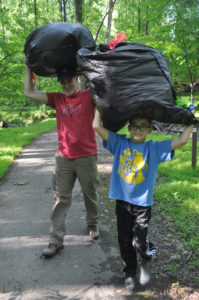 As a young Cub Scout, I became interested in invasive plant removal while volunteering to remove garlic mustard with Ms. Holtz and English ivy with Reston Association. My Pack 1530 earned the Hornaday Unit Award. Over the years, I learned more about the BSA Hornaday Award and became interested in one day managing my own project.
As a young Cub Scout, I became interested in invasive plant removal while volunteering to remove garlic mustard with Ms. Holtz and English ivy with Reston Association. My Pack 1530 earned the Hornaday Unit Award. Over the years, I learned more about the BSA Hornaday Award and became interested in one day managing my own project.
As soon as I graduated to BSA and joined Troop 987 in George Mason District, I started working on the required Hornaday merit badges and learned even more about conservation. When I talked to Ms. Sara Holtz about a project in April 2019, she suggested a site in Fairfax County Park Authority Difficult Run Stream Valley Park. I surveyed the site together with Ms. Holtz and Ms. Gloria Medina from the Fairfax County Invasive Management Area (IMA) Program. The area was almost entirely covered in pachysandra and vinca vine intermixed with many other invasive plants (e.g., Japanese stiltgrass, leatherleaf mahonia, Japanese maple, garlic mustard). This area slopes down to a stream, and I noted the overturned trees and eroded stream banks. However, small clusters of native plants peeked through this dense covering. I set a goal of removing the entire area of invasive plants to stop the plants from spreading, to prevent seeds from entering the watershed, to minimize erosion, and to grant native plants space to grow and spread. Native plants increase biodiversity by providing habitat and food to a variety of wildlife, insects and birds that the surrounding community can enjoy viewing.
The first step was to assess the site. I used the iNaturalist app to draw boundaries and started photographing plants that I didn’t recognize. I invited a personal acquaintance, Ms. Leah Oliver, a senior research botanist with NatureServe to help me identify native plants and a strategy for removing the invasive plants. In the Fall of 2019, volunteers spent three afternoons pulling invasive plants. I met with the local native plant nursery Earth Sangha to identify native plants that would flourish on the site, and volunteers planted native plants provided by IMA on two weekends at the end of October 2019. In addition, I went door to door distributing flyers to local residents alerting them to my project and asking them to refrain from planting invasive plants. I also posted signage at the site as well as shared information at BSA troop meetings, on social media, with neighborhood associations, and published a blog article with Fairfax County Park Authority.
The COVID pandemic forced me to cancel my Spring 2020 pulls. By July I was able to resume and had a small group of volunteers pull invasive plants that had sprung up since the previous fall. I organized another pull in September 2020 and had enough volunteers that we were able to expand the original site. At this point, I asked Ms. Medina to help me identify the remaining invasive plants on the original site and used spray paint to mark them. I had a final pull on October 3, 2020 to remove these larger shrubs and trees. On October 17, 2020 I concluded by project by replanting the site with native trees and plants.
Over the 18 months, I had 164 volunteers remove 124 bags of invasive plants and 170 native plants were planted. My best estimate is 417.5 hours were spent on this project. Over 4000 citizens were educated about the importance of removing invasive plants and using native plants through my outreach efforts which included talking to volunteers on site, canvassing the neighborhood, speaking at BSA troop meetings, posting on social media and Nextdoor, writing a blog for Scouter’s digest, and publishing a blog article with Fairfax County Park Authority and an article in Vienna Connections newspaper.
Note: Effective immediately, the Boy Scouts of America is transitioning conservation recognition to the new BSA Distinguished Conservation Service Award. Read here for more information.

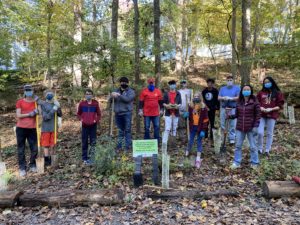
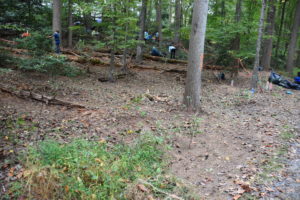
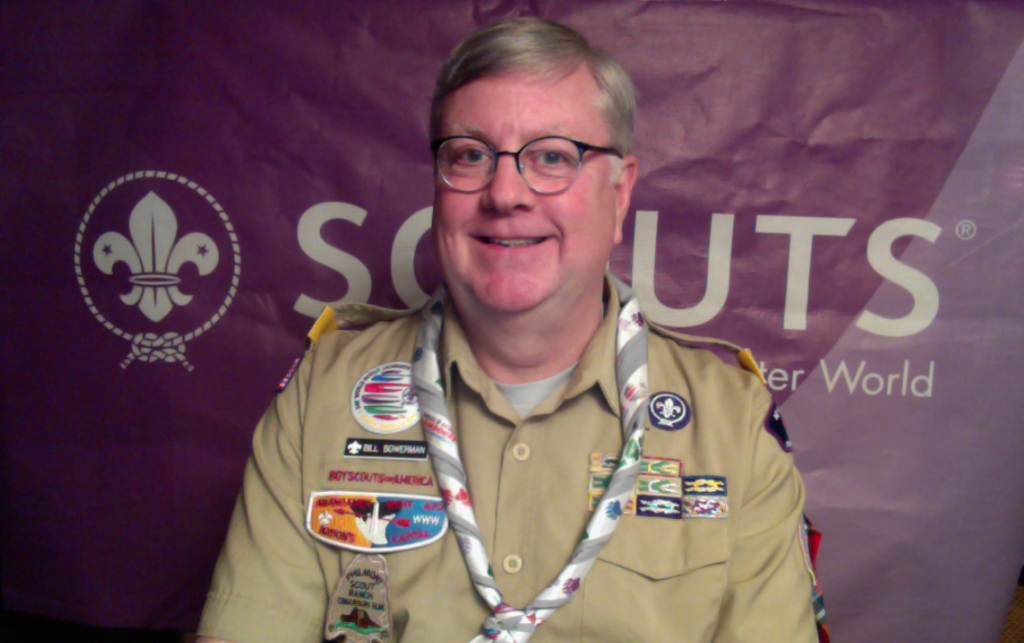
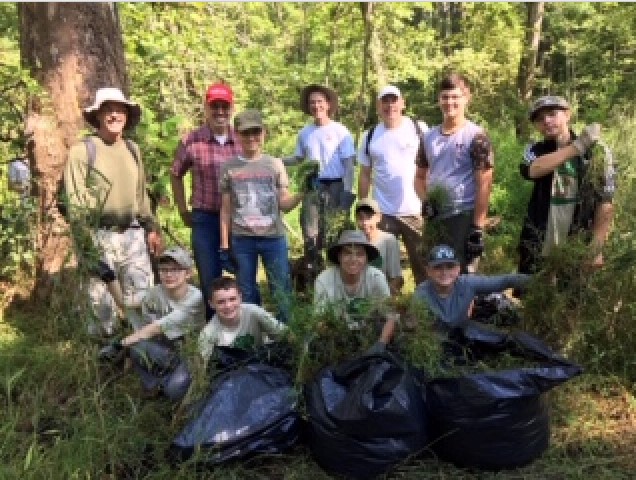



 US Congressman Gerry Connolly presented the award to John at a ceremony attended by several Fairfax County Supervisors, members of the FCPA Board, members of the Fairfax County Park Foundation board, FCPA staff, local conservationists and environmentalists, and FCPA volunteers.
US Congressman Gerry Connolly presented the award to John at a ceremony attended by several Fairfax County Supervisors, members of the FCPA Board, members of the Fairfax County Park Foundation board, FCPA staff, local conservationists and environmentalists, and FCPA volunteers.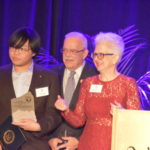 The Sally Ormsby Environmental Stewardship Award was established by the Park Authority Board on November 14, 2007, in recognition of Sally B. Ormsby’s many years of service as a citizen steward. Her actions promoted the responsible and sustainable management of natural resources. These precious assets are entrusted to the Park Authority’s care by the residents of this community. Through stewardship we protect these treasures now and for generations to come. This award recognizes individuals and organizations whose actions embody the spirit and values of stewardship and result in tangible environmental benefits. The Sally Ormsby Environmental Stewardship Award is open to individuals and groups whose actions embody the spirit of environmental stewardship and provide tangible environmental benefits to Fairfax County parks.
The Sally Ormsby Environmental Stewardship Award was established by the Park Authority Board on November 14, 2007, in recognition of Sally B. Ormsby’s many years of service as a citizen steward. Her actions promoted the responsible and sustainable management of natural resources. These precious assets are entrusted to the Park Authority’s care by the residents of this community. Through stewardship we protect these treasures now and for generations to come. This award recognizes individuals and organizations whose actions embody the spirit and values of stewardship and result in tangible environmental benefits. The Sally Ormsby Environmental Stewardship Award is open to individuals and groups whose actions embody the spirit of environmental stewardship and provide tangible environmental benefits to Fairfax County parks.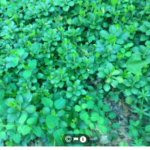
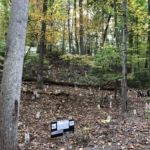
 Scouts displayed their conservation projects as part of the Sustainable Garden Tour hosted the weekend of June 9 by the Northern Virginia Soil and Water Conservation District. The annual garden tour features homes, churches, schools, and libraries with native plant landscaping, rain barrels, wildlife habitat, composting, rain gardens, and grass-free front yards.
Scouts displayed their conservation projects as part of the Sustainable Garden Tour hosted the weekend of June 9 by the Northern Virginia Soil and Water Conservation District. The annual garden tour features homes, churches, schools, and libraries with native plant landscaping, rain barrels, wildlife habitat, composting, rain gardens, and grass-free front yards.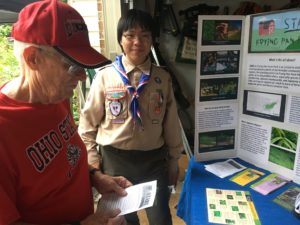 Another other Eagle Scout discussed his project to remove highly-invasive Japanese stiltgrass at Frying Pan Farm Park in Herndon, Virginia. He orchestrated several work days for Scouts and the public. During the second phase of his project, he led volunteers to plant common milkweed and other native plants in the area where the stiltgrass had been removed. This project also collaborated with the IMA program and helped the Scout earn the a Hornaday Award in addition to his Eagle Scout Award.
Another other Eagle Scout discussed his project to remove highly-invasive Japanese stiltgrass at Frying Pan Farm Park in Herndon, Virginia. He orchestrated several work days for Scouts and the public. During the second phase of his project, he led volunteers to plant common milkweed and other native plants in the area where the stiltgrass had been removed. This project also collaborated with the IMA program and helped the Scout earn the a Hornaday Award in addition to his Eagle Scout Award.